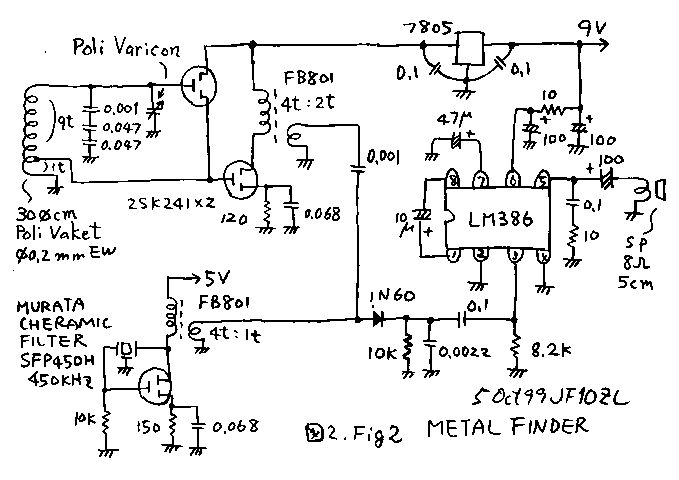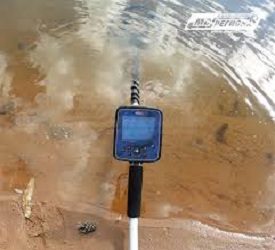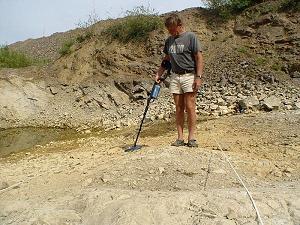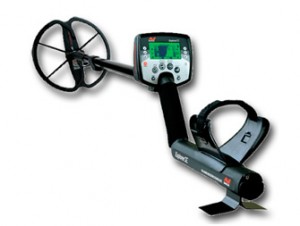Metal detectors vs. soil mineralization In the category treasure hunting more articles and learn more information about Metal detectors vs. soil mineralization Reviews Price Specifications Features Image manuals videos Accessories All this in metal detectors for gold.
There are several types of soil in which search or search for buried objects can be carried out, for example: sand, red earth, beach, rocks, dark earth, white sandy ground, etc.
Some soils are more mineralizing than others. When mixed with earth dust, minerals can be concentrated in the soil in various forms, for example: very fine grains, dust, rocks, or even large rock formations. Depending on the location, there may be multiple types and forms of minerals.
The magnetic field of the metal detector will interfere with metals that have magnetic or electrically conductive properties. For example, whether in the form of gravel or even in the form of powder, iron directly interferes with the detector’s ability to detect. In soils with a lot of iron dust, the detector generally becomes “noisy” and can make constantly loud hiss and noises.
In terms of depth, in more mineralized soils, magnetic waves will dissipate less homogeneously, reducing the range of potential depth of the magnetic field. In summary, more mineralization will result in less detection depth. See figure below
Different minerals in the soil directly affect the performance of your detector, see more in Soil content and false signals.
What is the best metal detector for mineralized soil?
Choosing the best metal detector for mineralized soil depends on various factors, including your budget, intended use, and personal preferences. Some metal detectors are designed to perform better in highly mineralized soil conditions. Here are a few popular models known for their effectiveness in mineralized soil:
Minelab Equinox 800:
This is a versatile and high-performance metal detector suitable for various soil conditions, including mineralized soil.
It uses Multi-IQ technology, allowing it to operate on different frequencies simultaneously, enhancing its ability to handle mineralization.
Garrett AT Pro:
The Garrett AT Pro is known for its all-terrain capabilities, and it includes a ground balance feature that helps in dealing with mineralized soil.
It offers good discrimination and sensitivity control, making it suitable for various metal detecting environments.
Fisher F75:
The Fisher F75 is recognized for its sensitivity and ability to handle mineralized soil well.
It features adjustable sensitivity and ground balance settings to adapt to different soil conditions.
Nokta Makro Anfibio Multi:
This metal detector is designed to perform well in challenging environments, including mineralized soil.
It offers multiple search modes and adjustable settings for ground balancing.
XP Deus:
The XP Deus is a lightweight and wireless metal detector with adjustable frequency settings.
It provides good performance in mineralized soil and offers customizable settings to suit different detecting conditions.
When choosing a metal detector for mineralized soil, consider features such as ground balance control, adjustable sensitivity, and multi-frequency capabilities. It’s also helpful to read reviews from users who have experience with the specific model you’re considering. Keep in mind that the “best” detector can vary depending on individual preferences and the specific conditions in which you plan to use it.
What is mineralized soil metal detecting?
Mineralized soil metal detecting refers to the activity of using a metal detector in areas where the soil contains high levels of minerals. The term “mineralized soil” typically refers to soil that has a higher concentration of minerals, such as iron, salt, or other metallic compounds. This type of soil can pose challenges for metal detector users because the minerals can create interference and affect the detector’s performance.
Here are some key points about mineralized soil metal detecting:
Interference and Ground Balance:
Minerals in the soil can generate signals that may be similar to those produced by metal objects. This interference can make it more difficult for a metal detector to distinguish between natural mineralization and actual metal targets.
Ground balance is a crucial feature in metal detectors used in mineralized soil. It helps the detector adjust to the specific mineralization levels, reducing false signals and improving target detection.
Challenges and Adjustments:
In highly mineralized soil, metal detectors may struggle to maintain accurate target identification and depth readings. Users often need to make adjustments to the detector’s settings to optimize performance.
Sensitivity, discrimination, and ground balance settings may need to be fine-tuned based on the mineral content of the soil.
Target Identification:
Mineralized soil can impact the ability of a metal detector to accurately identify the type of metal in a target. Some detectors with advanced features and technologies, such as multi-frequency capabilities, are designed to better handle these challenges.
Areas of Use:
Mineralized soil is common in certain geological regions, and metal detectorists may encounter it in locations with high mineral content, such as areas with volcanic activity or regions with naturally occurring minerals.
Mineralized soil metal detecting is often relevant for treasure hunters, relic hunters, gold prospectors, and individuals searching for artifacts in historical or archaeological sites.
Metal detectors used in mineralized soil conditions are equipped with features to help users overcome challenges and improve their chances of finding valuable targets while minimizing false signals.
Understanding how to properly adjust the settings of a metal detector in mineralized soil is crucial for successful and efficient metal detecting in such environments.
How do you identify mineralized soil?
Identifying mineralized soil usually involves a combination of visual inspection, geologic knowledge, and sometimes specialized equipment. Here are some general steps and indicators that can help you identify mineralized soil:
Visual Inspection:
Color: Mineralized soil often has distinctive colors, such as red, orange, yellow, or brown, depending on the types of minerals present. For example, iron-rich soil may appear red or rusty.
Texture: Certain minerals can give the soil a unique texture. For instance, the presence of clay or gypsum can result in a sticky or powdery texture, respectively.
Presence of Crystals or Rocks: Observe the soil for the presence of crystals, rocks, or mineral deposits. This can provide visual clues about the mineral content.
Geological Knowledge:
Geological Maps: Geological maps of an area can provide information about the types of rocks and minerals present. Maps may highlight regions with specific geological features or mineral deposits.
Local Geological Surveys: Local geological surveys or reports may offer detailed information about the mineral composition of the soil in a specific area.
Laboratory Testing:
Soil Analysis: Soil samples can be collected and sent to a laboratory for analysis. A soil analysis can provide detailed information about the mineral composition, including the presence of specific elements and compounds.
Use of Geophysical Instruments:
Magnetometers: Magnetometers can measure variations in the Earth’s magnetic field caused by magnetic minerals in the soil. Anomalies detected by a magnetometer can indicate the presence of mineralized soil.
Electromagnetic Induction Instruments: These instruments can measure the electrical conductivity of the soil, which is influenced by mineral content. Conductive soils may indicate the presence of minerals.
Field Testing with Metal Detectors:
Metal Detector Response: Highly mineralized soil can affect the performance of metal detectors. If you notice erratic behavior, false signals, or difficulty maintaining ground balance with a metal detector, it could be an indication of mineralized soil.
It’s important to note that mineralization can vary widely from one location to another. Developing a familiarity with the local geology and using a combination of visual inspection, geological knowledge, and, if necessary, specialized instruments can help in identifying mineralized soil accurately. If in doubt, consulting with geologists or experts in soil science can provide valuable insights.
Can metal detectors detect minerals?
Metal detectors are primarily designed to detect and respond to metallic objects rather than minerals. While metal detectors are not intended for identifying specific minerals, they can indirectly signal the presence of certain minerals in the ground, especially in highly mineralized soil. Here’s how metal detectors and minerals are connected:
Mineralization Effects:
In areas with high mineralization, such as those containing iron, salt, or other conductive minerals, metal detectors may encounter challenges. The minerals can cause interference and create false signals, making it more difficult for the detector to accurately identify metal objects.
Ground Balancing:
Many modern metal detectors come equipped with a ground balancing feature. This feature allows users to adjust the detector to compensate for the effects of mineralization in the soil. Proper ground balancing helps minimize false signals caused by minerals and improves the detector’s performance.
Gold Prospecting:
Metal detectors are commonly used in gold prospecting, where the presence of gold is often associated with certain minerals. Gold itself is not highly conductive, but it is often found in mineralized quartz veins or associated with other minerals. Metal detectors can be sensitive to these mineralized conditions, making them useful tools for gold prospectors.
Indirect Identification:
While metal detectors are not designed for direct mineral identification, prospectors and geologists sometimes use them as preliminary tools to identify areas with elevated mineralization. If a metal detector consistently detects targets in a specific area, it may indicate the presence of metallic minerals.
It’s essential to understand that metal detectors are more effective at identifying and locating metallic objects like coins, jewelry, or relics rather than specific minerals. If your goal is to identify the composition of the soil or specific minerals, other methods such as laboratory soil analysis or geophysical instruments like magnetometers and electromagnetic induction devices may be more suitable.
- What is the depth of detection- mineralization of soil and hot rocks
- Metal detector: mineralization
- Frequencies metals
- mole prospector metal detector video
- Gold miners in search of richer seams
- Best Frequency for Detecting Gold
- What are false metal detection signals and why do they occur?
- Scan master metal detectors for gold
Related Articles
- Sk700 underground metal detector
- Why not save on the air conditioner ?
- MINELAB SOVEREIGN GT Metal Detector
- How do you change the battery in your smoke detectors with cable connection
- A man using a metal detector to find gold coins treasure 840
- Metal Detector Rover C II
- Red Mercury
- whites tm 808 metal detector review
- Golden Mask 3 + Turbo metal detector
- Choosing the best home security systems















